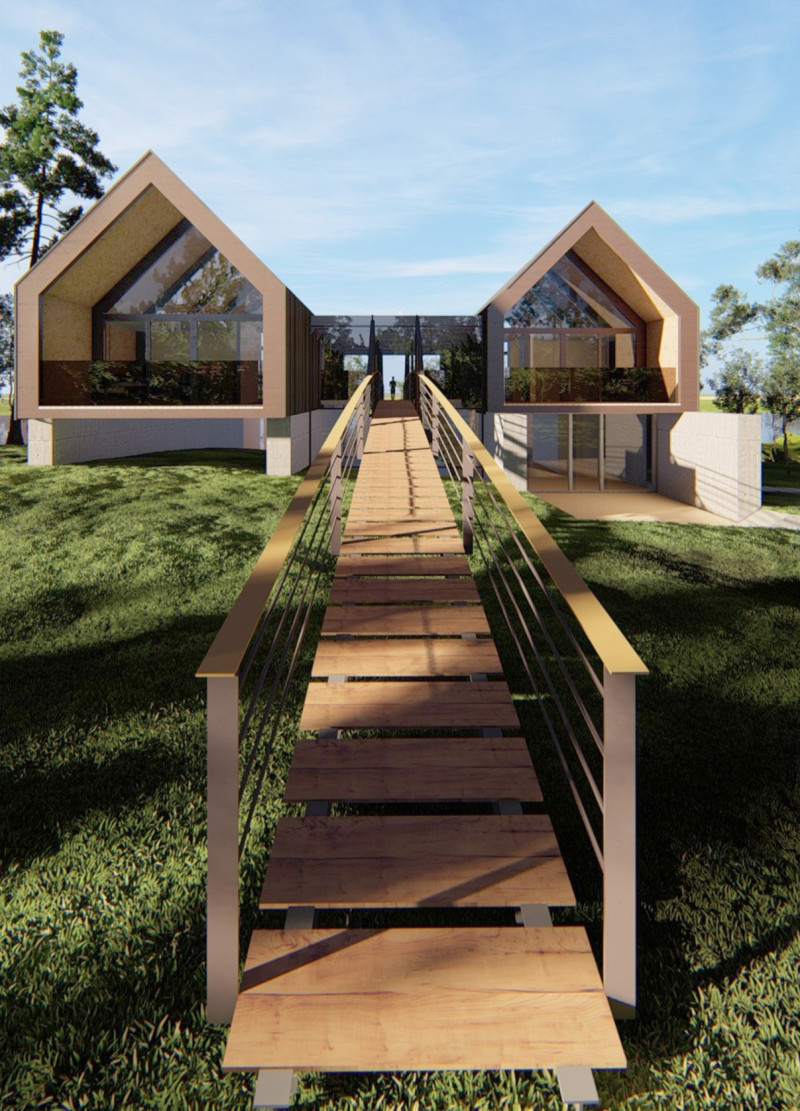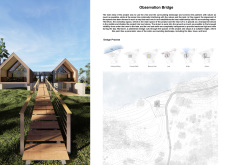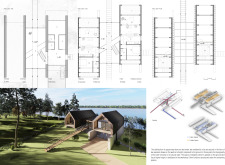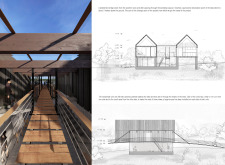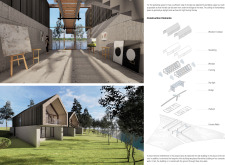5 key facts about this project
At its core, the Observation Bridge is divided into two residential units, presenting a communal space while still affording inhabitants the privacy they need. The layout promotes interaction through shared spaces, particularly the workshop, which serves as the central feature of the design. The architects emphasized the importance of visibility and access to nature, crafting an inviting atmosphere that encourages occupants to immerse themselves in their surroundings.
The workshop is skillfully positioned to capitalize on natural light and panoramic views, contributing to an inspiring workspace. With its transparent atrium design, the interior is flooded with daylight, enhancing the overall creative vibe of the space. The architects have carefully chosen materials that align with the project’s ethos; the use of wooden envelopes and concrete walls promotes sustainability while echoing the textures of the landscape. Large windows incorporated throughout the structure ensure that natural scenery is not only visible but an integral part of the user experience.
Spatial organization throughout the Observation Bridge is thoughtfully executed. The two residential units are designed as elevated boxes, harmonizing with the topography and allowing for expansive views in multiple directions. On the first floor, essential living spaces are situated to ensure comfort and functionality. The second floor, in contrast, is dedicated entirely to the residential units, equipped with balconies that extend outward, allowing for tranquil overlooks of the lake and its surroundings.
A key aspect of the project is its pedestrian bridge, which connects the two residential units above ground. This bridge serves as a crucial design element by providing a unique vantage point that enhances the occupants’ ability to appreciate the landscape. The bridge facilitates interaction among users while establishing a physical and visual link between different parts of the project.
The design of the Observation Bridge also effectively incorporates structural innovation through the use of concrete walls and a minimal footprint approach. This strategy not only enhances stability but also minimizes the building's environmental impact, respecting the natural habitat in which it stands. The choice of materials such as sheathing for insulation and light-entry skylights signifies an understanding of local climate conditions and energy efficiency, further contributing to the overall sustainability of the project.
While the Observation Bridge serves practical artistic functions, its unique design approaches foster a deeper connection to nature and creativity. By providing distinct spaces that encourage collaboration and contemplation, this architectural endeavor reflects a thoughtful response to the surrounding environment.
To further understand the nuances of this project, interested readers are encouraged to explore the architectural plans, sections, and designs that provide a comprehensive insight into the thought processes behind this unique approach in architecture. Delving into these architectural ideas will reveal the intricacies and careful considerations embedded in the Observation Bridge project, exemplifying the potential for architecture to harmonize with its environment while serving functional purposes.


